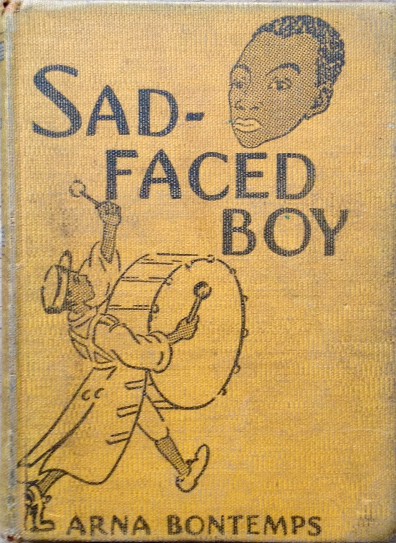Inspiring Young Readers
 posted on 04 Sep 2018
posted on 04 Sep 2018
Caring For The Careworn: Sad-Faced Boy
If you are a book collector or you are in the process of building up your own personal library, you may have looked for advice from those who have made collecting a life-time mission. One of the tips you will probably have picked up from your research is that when you are looking for specific titles you should always try and buy the best copy you can afford. Ignore the battered, eschew the former library copy with all its labels and marks, decline the copy that has been scribbled on.
I understand the allure of a clean, fresh, tight copy of any book – books are, after all, tactile and aesthetic pleasures. But what do you do when you come across a rare copy – maybe not valuable but hard to find - that has clearly been through the mill and has seen better days? And, if you do decide to buy it, should you invest time in trying to smarten or tidy it up?
I’ve recently had this dilemma with a book called Sad-Faced Boy written by Arna Bontemps and published in 1937 by the US publisher, Houghton Mifflin. Bontemps (1902 – 1973) was an important member of what is now known as the Harlem Renaissance, which is the umbrella term given to a host of black writers – novelists, poets, playwrights, artists and actors - whose work was often marginalised or ignored by a white establishment. Sad-Faced Boy is a children’s book that is described in this way on the allacademic research website :
“Sad-Faced Boy and its sequel both suggest the ameliorative effects of music on a Black child’s developing sense of self. In Sad-Faced Boy, unbeknownst to their parents, the three Dozier brothers Rags, Willie and Slumber (aka the sad-faced boy) hop a train from their rural Alabama hometown to visit their Uncle Jasper Tappin in Harlem during the height of the Harlem Renaissance. Despite their backwardness and Black dialect that reveal their rural and southern upbringing, their musical talents afford them entrance into Harlem’s vibrant artistic community, giving them some temporary local fame and badly needed income. In the sequel, the three brothers stow away on a ship, despite a concerted effort on the part of Soup Pot, the ships prize fighter-sized cook and watchman, to leave them on land. After several days at sea, when the crew members finally discover the boys in the cargo hold, Soup Pot threatens to throw them overboard. Only the boys musical prowess saves them. Both of these stories take place in Black worlds places where markers of class and socioeconomic status matter much more than does color, and where music has the power not only to change other peoples opinions of the protagonists but also literally to save their lives. “
So, this is undoubtedly an interesting literary and historical volume but the copy I have found has its issues. The first thing to say is that it’s lost its jacket – although that is very common for a book of this period because dust jackets were often discarded by readers who preferred the illustration on the cloth boards. Perhaps more importantly, it’s been a library book at some point in its life. There’s the tell-tale library number on the title page, a shelf number on the spine and the horrible brown glue marks on the free end papers where the library ticket was once attached.
The book seems to have been a popular one in whatever library it lived. More top corners have been creased over as book marks than in most books I’ve come across and there’s the odd crayon mark, pencil annotation and some suspicious stains and blobs that might well be breakfast, dinner or tea.
Someone, a librarian perhaps, has snipped-out a contemporary review of the book from a magazine and pasted it on the first free front page.
It is, however, a first edition and, I think, a first impression of the first edition – the mistake on the spine where the title of the book is printed incorrectly as Sad-Boy Faced seems to confirm this.
Back then to the dilemma. Should I go through this book and attempt to ‘tidy’ and clean it up or should it be left as it has been found?
I have opted for the latter. This book has had a life over the past 80 years since its publication and the marks and creases, the flaws and faults are now - like an elderly human face – all part of its character and its story. It exists as an important link to a different time and place and what it's gathered along the way in terms of physical distress is now, in my view, almost as important as the story Bontemps wanted to tell back in 1937.
It will sit on our shelves with no cosmetic enhancement and find a treasured position in our collection – just waiting to eventually be passed on to its next custodian and for the next chapter in its life story.
Terry Potter
September 2018
(Click on any image below to view them in a slide show format)








